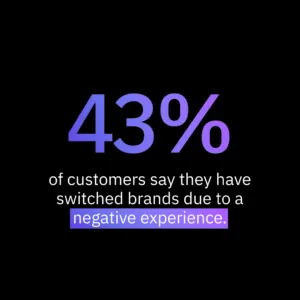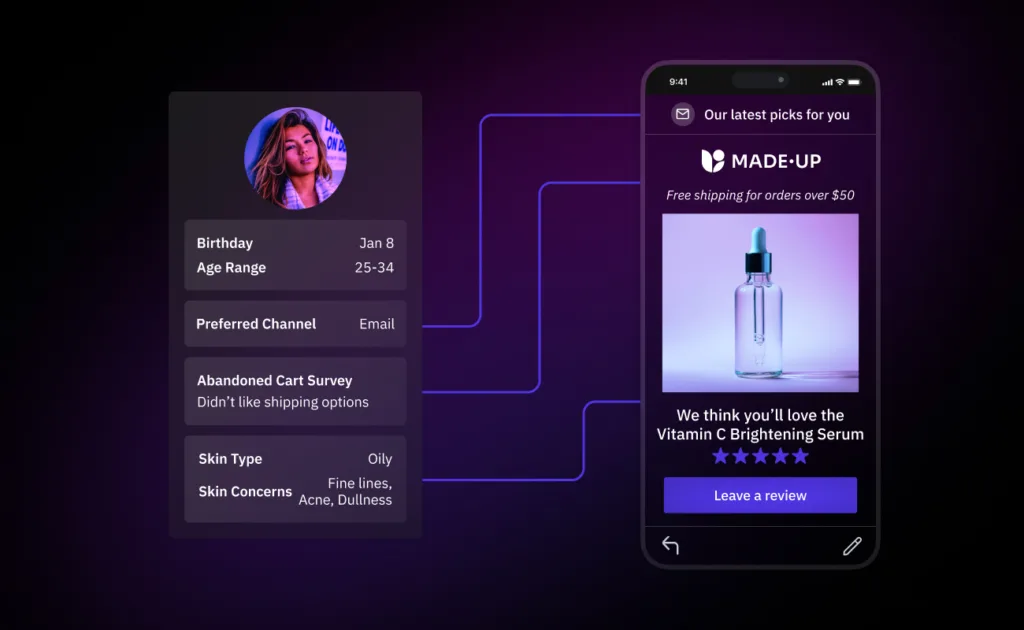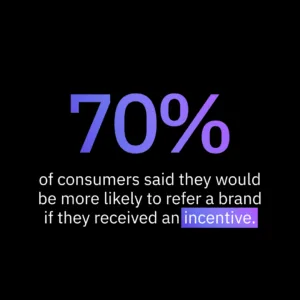
- Customer Marketing
- Reviews and UGC
- Social Proof
How To Add Social Proof on Shopify
Katie Vaught | Apr 25, 2025
Jun 16, 2023 | 7 minute read

Megan Wenzl
Content Marketing Manager
In today’s era of cut-throat competition, customer retention and loyalty are essential for any ecommerce business. A strong base of loyal customers not only acts as a long-term revenue stream, but also serves as the company’s brand ambassadors. And in an environment where brands are wading through an uncertain economy and ever-changing digital landscape, it’s increasingly crucial for them to not only keep current customers happy, but to use those customers to attract new ones.
In order to help merchants create customer experiences that drive retention and loyalty, Okendo commissioned a study to more than 1,000 U.S. consumers. The following is an analysis of some of the report’s top findings.
Not surprisingly, a significant number of consumers are cutting back on their spending due to economic unpredictability. In fact, 80% of the consumers reported cutting their spending to some degree, with 34% reporting that they are cutting it “significantly”. In contrast, only 8% of consumers claimed to be spending more.
When asked to describe how they were cutting back on spending, 62% reported that they are cutting out specific categories that they would typically buy. Meanwhile, 38% said that they were avoiding new products and experiences, but not cutting back on things that they currently buy, even if they aren’t necessary or essential.
So what makes a product so good that consumers will keep buying it even when they are making a concerted effort to tighten their belts?
When consumers were asked about the attributes that make them decide to continue purchasing a product, even when they are cutting spending in other areas, the top three responses were: “value” (71%), followed by the “brand offering good incentives for them to continue buying the product” (36%), and “the way a product makes me feel” (35%).

And while it may be promising for brands to hear that despite economic uncertainty, customers will still spend money on those non-essential items that still deliver to them a sense of fulfillment, the fact remains that this environment is making it easier for unhappy customers to switch if their expectations aren’t met.
In fact, 43% of consumers say they have switched brands in the last six months due to a negative customer experience, clearly indicating that just one poor interaction can have a significant impact on brand loyalty and the bottom line.
So, then, what are these expectations that must be met in order to prevent cash conscious customers from ending a relationship with a brand and/or seeking out alternative options?
When we asked consumers about the key experiences that ecommerce brands need to deliver to meet and exceed customer expectations, “a great product” was the most crucial factor with 71% of consumers citing it as important. Coming in second and third were an “easy checkout & shipping experience” (57%) and “visible social proof i.e. customer reviews, user-generated content” (48%).
The fact that nearly half of consumers expect social proof from a brand underscores the continued importance for brands to have a reviews process in place that gives customers the confidence they need to make purchases. In fact, consumers rated customer reviews as the number one source of information that makes them more confident in making a purchase.
Interestingly, this coincides with our previous ecommerce trust research which found that 95% of consumers believe reviews are important when making a purchase decision, with a significant portion (34%) asserting that they are “extremely” important. Even more notable: 90% said they’re more impactful than those from influencers.
We also wanted to dig into what is needed to take things to the next level and exceed customer expectations. Interestingly, 58% of consumers cited “survey/quiz and other feedback prompts to get to know them better” and custom product recommendations (42%) as the top two factors. This means that in order for merchants to turn an average experience into a remarkable one they need to lead with personalization. However, personalization is a two way street and in today’s increasingly privacy centric world, it can be challenging to get information from customers that can be used to personalize their experience. That’s where trust comes in.

When asked, “What would you feel comfortable sharing with a brand that you are doing business with for the first time in order to receive a more personalized experience?” 44% said they would be willing to share “Demographic information, e.g. my age, gender, etc.” and 34% said they would be comfortable sharing their “contact information, i.e., phone number, email address.” However, those percentages increase to 49% and 45% respectively when asked what they’d be willing to give a brand they already trust, underscoring the importance of building trust to increase conversion rate.
This represents an opportunity for ecommerce brands to use data to create more targeted marketing campaigns and offer personalized product recommendations based on customer attributes. Both of which we know can have a substantial impact on conversion rates and average order values. For example, brands can display these attributes alongside their customer’s review which helps shoppers with similar attributes make a more informed – and confident – purchase decision. They can also utilize the zero-party data provided by the customer to send personalized, 1:1 messaging based on their unique needs, preferences, and behaviors.
In an age of social media and online shopping, word-of-mouth referrals can be a powerful tool for ecommerce brands. But what drives customers to refer a brand to their friends and family?
When asked how familiar or how often they need to have purchased from a brand before referring it, 57% of consumers said they need to have made multiple purchases with consistently great experiences. However, nearly 30% of consumers said they only need to have made one purchase, as long as they had a great experience. Interestingly, 13% of consumers said they don’t need to have made a purchase, as long as they have enough information to make them think the brand fits the needs of the person they are referring to.

Our research found that incentives can also play a role in encouraging referrals. When asked if they would be more likely to refer to a brand if they received an incentive, 70% of consumers said “yes”.
But what factors actually drive loyalty and referrals for ecommerce brands? According to our survey, a product that consistently meets customers’ needs is the most important factor in building loyalty. This was followed by “competitive pricing” and “fast shipping”. Interestingly, “customer experience”, “exceptional customer service”, and “loyalty programs or rewards” came in towards the bottom of the factors.
It’s worth noting, however, that while customer experience and customer service may not have been the obvious choices when customers were asked about the factors that drive loyalty, the failure of these elements can quickly lead to a loss of loyalty. When asked what would deter customers from making another purchase and potentially switching brands, a change in product quality was ranked as the most significant factor. But a “bad customer experience that wasn’t adequately resolved by customer support” ranked second, ahead of factors like pricing and shipping.
While consistent product quality, competitive pricing, and fast shipping are important for building loyalty, ecommerce brands should also focus on delivering exceptional customer experience and service to maintain that loyalty and encourage referrals. And while incentives can help to encourage referrals, brands should not rely on them alone and should ensure that their products and customer experiences are strong enough to drive referrals even without incentives.
It’s understandable if constant chatter about economic unpredictability is not easy to plan for. But if there’s one industry that knows how to overcome a patchwork of complexities, it’s ecommerce.
Indeed, the industry has encountered countless challenges these past few years, all of which have allowed it to demonstrate its resilience. Its ability to adapt to fast-changing consumer demands is what will steal attention this time around.
The good news is that despite consumers’ plans to hone in their spending, there are opportunities on the table for brands to tailor their offerings to their shoppers’ unique needs and, consequently, maximize conversions. However, this opportunity will be driven by their ability to harness the power of real-time data and deep customer insights to build a reputation of trust, personalization, and authenticity.
Related articles
Ready to learn more?